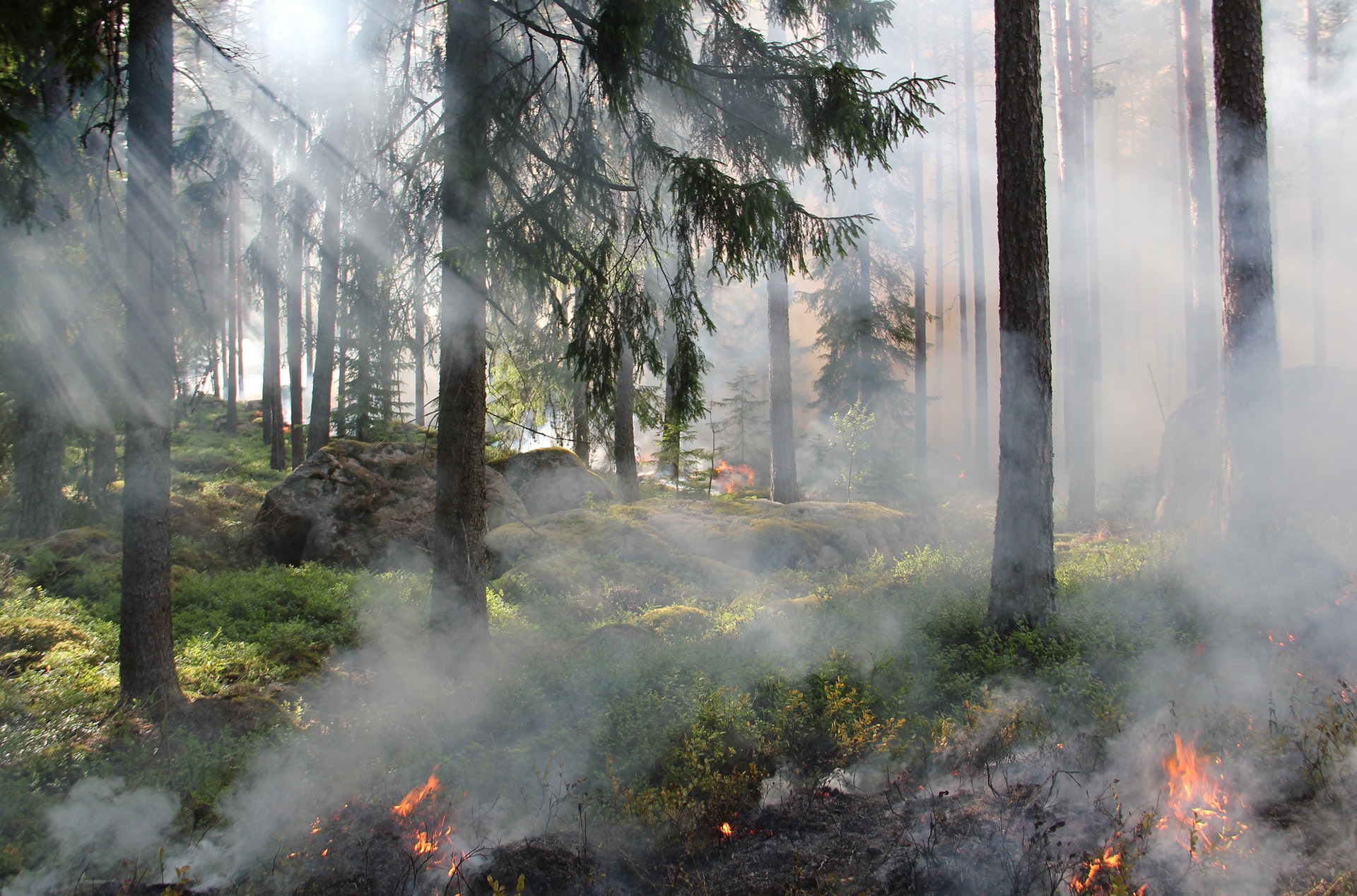Environment & Nature
More frequent fires could dramatically alter boreal forests and emit more carbon

Increasing fire activity in the boreal forest is consistent with projected responses to climate change. This means that individual forests are likely to burn more frequently then they have in the past hundreds, even thousands, of years. (Pexels Photo)
These days, smoke-filled summer skies and dusky red sunsets are a common occurrence across Canada and the United States. Much of that smoke is coming from large northern wildfires.
We have been working on the consequences of increasing boreal wildfires since 2004, when a huge swath (2.6 million hectares) of boreal forest burned in Alaska and the Yukon. It seemed, at the time, like an unusually large fire year. Since then, we have seen record breaking fire activity occur repeatedly across northern North America.
Increasing fire activity in the boreal forest is consistent with projected responses to climate change. This means that individual forests are likely to burn more frequently then they have in the past hundreds, even thousands, of years. Our research on forest responses to large fires shows that an increasing frequency of fire leads to a cascading set of changes that may substantially alter the boreal forest as we know it.
Impacts of more frequent fire
Boreal forests have acted as carbon sinks — they remove carbon dioxide from the atmosphere and store it in biological materials — for millennia. But our recent study of the 2014 fires in the Northwest Territories shows that some parts of the boreal forest are becoming sources of atmospheric carbon, potentially contributing to the greenhouse effect.
Recent estimates suggest that boreal forests store more carbon than is currently in the atmosphere, with most of that carbon found in soils. These pools of old soil carbon are contained in deeper soil layers and tend to stay wet. Historically, this has kept them safe from burning.
However, our work in the Northwest Territories shows that when young forests (less than 60 years old) burn, this old carbon — stored in previous fire cycles — is closer to the surface, making it about five times more likely to burn. Increasing fire frequency thus makes boreal forests more likely to release stored legacy carbon back to the atmosphere.
Frequent burning also affects tree regeneration after fire, changing the tree species that dominate the forest canopy and potentially shifting some forest stands to tundra or open woodlands. Our work on forest recovery after the large fire years of 2004-05 in Alaska and Yukon shows that black spruce, the most abundant tree in North America’s boreal forest, quickly loses its home court advantage when fires become too frequent.
Black spruce is the quintessential slow-growing northern tree. It doesn’t produce its first seed crop until it is about 25 years old and it needs 50-80 years to reach full reproductive maturity.
Normally these spruce trees regenerate well after fire. They have the ability to “bank” seeds for the future by sealing them in cones. These cones open with fire and disperse many hundreds of seeds onto the landscape.
However, when black spruce forests burn at an early age, a safe bank of cones has not yet developed and the absence of seeds reduces spruce regeneration success. In the far North, repeat fires in black spruce forests can cause a shift from forest to tundra.
In warmer parts of the boreal forest, spruce forests are replaced with deciduous trees like birch and aspen.
Losing legacies
When legacy carbon burns and black spruce regeneration fails, one of the boreal forest’s most important ecosystem services, the long-term storage of atmospheric carbon, is jeopardized.
In addition to storing carbon, the boreal forest provides critical habitat for wildlife species such as caribou that feed on lichens in mature conifer stands. Large herds of barren ground caribou that overwinter in the boreal forest have been a traditional food source for northern peoples for millenia.
Increases in fire that disrupt conifer forests and their lichen understory will likely have negative impacts on caribou populations and the people that depend on them. And once shifts from black spruce forests to aspen or tundra occur, these forests are slow to return to historic conditions, as the ingredients necessary to regenerate the original forests are now missing: legacy carbon seedbeds and a source of black spruce seed.
The impacts caused by a changing fire frequency can happen fast — loss of legacy carbon and shifts in tree species are triggered by single fire events — and will likely dwarf other impacts of climate change on boreal forests, like drought stress or stimulation of plant growth with a warmer, carbon-rich atmosphere.
Changes to boreal forests and their ecosystem services will impact the lifestyles and livelihoods of local people, as well as influence the future climate trajectory of our planet. As climate change intensifies and fire frequency continues to increase we are likely to see a greater area of boreal forests shifting from carbon sinks to carbon sources and large declines in old growth conifers by the end of the 21st century.
———
This article is republished from The Conversation under a Creative Commons license. Disclosure information is available on the original site. Read the original article:
https://theconversation.com/more-frequent-fires-could-dramatically-a





















